By Melody Wright, LMFT
I know what it’s like to feel stuck.
To want change so badly but feel like nothing is working.
Maybe you’ve tried therapy before, hoping it would help you break free from anxiety, trauma, or emotional pain.
Maybe you’ve spent months, or even years, talking about your struggles, understanding your triggers, and working through your past.
But despite all of that effort, you still don’t feel better.
You don’t want to waste time in therapy that just scratches the surface, you want real healing.
If any of this resonates, you’ve come to the right place.
The truth is, traditional talk therapy can be helpful, but for many people, it doesn’t go deep enough.
That’s because healing isn’t just about talking, it’s about working with your unique nervous system, and your emotions in a way that creates lasting change.
That’s exactly what holistic and somatic therapy offers.
Why Traditional Talk Therapy Often Falls Short
If you’ve ever walked out of a therapy session feeling like you just vented for an hour but didn’t actually shift anything, you know how frustrating it can be.
Talk therapy focuses primarily on thoughts and behaviors, which can help you understand your struggles, but understanding alone doesn’t always create change.
You may end up feeling:
Emotionally stuck – You know why you feel the way you do, but the pain doesn’t go away.
Disconnected from your body – You experience stress, anxiety, or trauma physically, but therapy didn’t address the root cause that actually led to real change and growth.
Frustrated by looping conversations – You talk about the same issues over and over, but nothing really changes.
Triggered and dysregulated – No matter how much insight you gain, your body still reacts in ways you can’t control.
You may experience these things because trauma, anxiety, and emotional wounds don’t just live in your mind, they are stored in your nervous system and body.
If therapy only addresses your thoughts and behaviors, it’s missing half the picture.
If You’ve Tried Talk Therapy But Still Feel Stuck…
You’re not broken and you’re not failing therapy.
The truth is, some therapy models aren’t designed to fully heal underlying trauma, anxiety, and deep emotional pain.
Let’s say you’ve experienced something painful in the past, maybe childhood neglect, a toxic relationship, or a traumatic event.
Even if you’ve processed it in therapy, your body might still be holding onto the experience.
Your nervous system learned to stay in fight-or-flight mode.
Your body reacts to triggers before your mind can catch up.
Your emotions feel overwhelming or completely shut down.
You feel disconnected or numb when emotional triggers rise, almost like you’re frozen.
This is why just talking about it isn’t enough.
You need an approach that helps your body and nervous system process and release what’s been stuck for years.
If You’re Just Starting Therapy, Here’s Why You Should Choose Somatic & Holistic Therapy First
Maybe you’re new to therapy, and you’re wondering:
Will therapy actually help me?
What’s the best approach for deep healing?
How do I know if I’m choosing the right kind of therapy?
The reality is that many people start therapy with high hopes, only to feel disappointed when they don’t experience real change.
Or they might feel better for a while, only to find that the issues they thought they had moved past resurface again.
By starting with somatic and holistic therapy, you can finally do deeper inner work with a therapist who understands healing on the mind, body, and spirit levels.
Rather than feeling stuck or disconnected, you’ll have the support to get to the root of your struggles, break old patterns, and create real, lasting change.
What Makes Holistic and Somatic Therapy So Effective?
Unlike traditional therapy, which focuses mainly on thoughts and behaviors, holistic and somatic therapy treats you as a whole person - mind, body, and spirit.
While every holistic and somatic therapist has their own approach, here’s what this kind of therapy typically looks like:
Mind-Body Connection – You’ll learn how to tune into your body’s signals, release stored emotions, and restore balance from within.
Real-Time Healing – Instead of just gaining insight, you’ll practice techniques that create immediate shifts in how you feel in the present moment.
Nervous System Regulation – Anxiety, trauma, and stress get wired into your body. This approach teaches you how to physically shift out of survival mode and into a state of calm.
Spiritual Alignment – Healing isn’t just psychological; it’s also about reconnecting with what gives you meaning, purpose, and a sense of wholeness, whether that’s through mindfulness, nature, creativity, a higher power, or something deeply personal to you.
Breaking the Cycle – If you’ve felt stuck in an endless loop of self-analysis, somatic therapy can help you uncover what’s beneath the surface and create lasting change.
This isn’t just about managing symptoms, it’s about deep transformation.
Why Where You Choose To Do Therapy Matters
Where you receive therapy is just as important as the type of therapy you choose. Many people feel frustrated with therapy—not because it doesn’t work, but because the system itself can make it harder to heal.
Large, corporate, and insurance-based therapy practices often prioritize efficiency, which can sometimes lead to:
Limited sessions based on insurance policies rather than actual need
High caseloads that make personalized care difficult
A feeling of being just another number rather than a person with unique needs
While not every large practice operates this way, these systemic challenges can make it harder to receive the deep, transformative care you deserve.
Here at Life By Design Therapy™, we do things differently. We offer:
Personalized care – You aren’t rushed through sessions or treated like just another client. Your healing journey is at the center of our work.
More freedom & flexibility – Since we don’t rely on insurance to dictate care, we can focus on what’s actually effective for you.
A deeper connection with your therapist – Healing happens in relationships, and we ensure that you have the time and space to feel truly supported.
A holistic approach – We integrate the body, mind, and nervous system to create lasting healing rather than just addressing surface-level symptoms.
When you’re working through something as deep as trauma, anxiety, or emotional pain, you deserve a space where you are truly seen, heard, and supported.
Final Thoughts
Whether you’ve tried therapy before and felt stuck, or you’re just beginning your journey, one thing is clear, you don’t have to keep struggling and you don’t have to stay in survival mode.
There is a way to heal that doesn’t just focus on talking, analyzing, or managing symptoms.
It’s about truly transforming how you feel in your body and in your life.
Holistic and somatic therapy are not just alternatives; they are the pathways that create deep, lasting change, and allow you to design the life you desire.
If you’re ready to experience the healing that works and work with a premier therapy center,
This Weeks Affirmations
I am not broken; my body and nervous system are simply seeking safety and balance.
I honor my body’s wisdom and trust that healing happens in layers.
I no longer have to just manage my symptoms, I am capable of true transformation.
I am worthy of a therapy experience where I feel truly seen, heard, and supported.
Healing is not just in my mind, it’s in my body, and I am learning to release and restore.
Additional Resources
**If you’re interested in learning more about mind-body healing check out these books below:
The Body Keeps the Score: Brain, Mind, and Body in the Healing of Trauma by Bessel van der Kolk M.D
Polyvagal Theory in Therapy: Engaging the Rhythm of Regulation by Deb Dana
The Myth of Normal: Trauma, Illness, and Healing in a Toxic Culture by Gabor Maté
When the Body Says No: The Cost of Hidden Stress by Gabor Maté
Burnout: The Secret to Unlocking the Stress Cycle by Emily Nagoski and Amelia Nagoski
The Mindbody Prescription: Healing the Body, Healing the Pain by Dr. John E. Sarno
Molecules of Emotion: The Science Behind Mind-Body Medicine by Candace Pert
**Some product links are affiliate links, which means we'll receive a commission if you purchase through our link, at no extra cost to you. Please read the full disclosure here.















